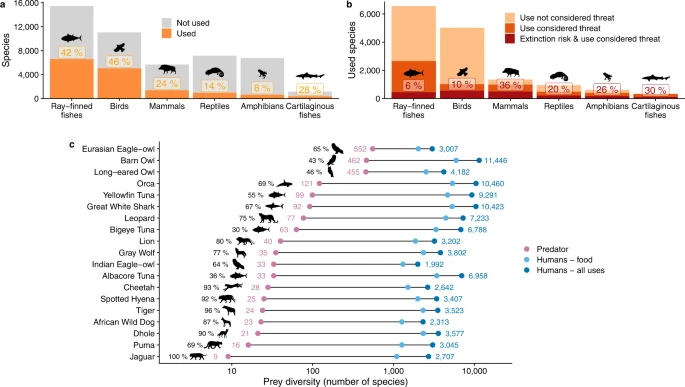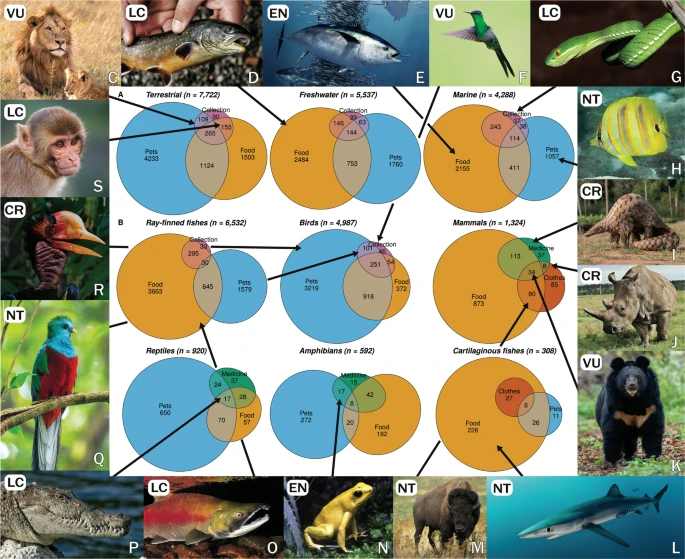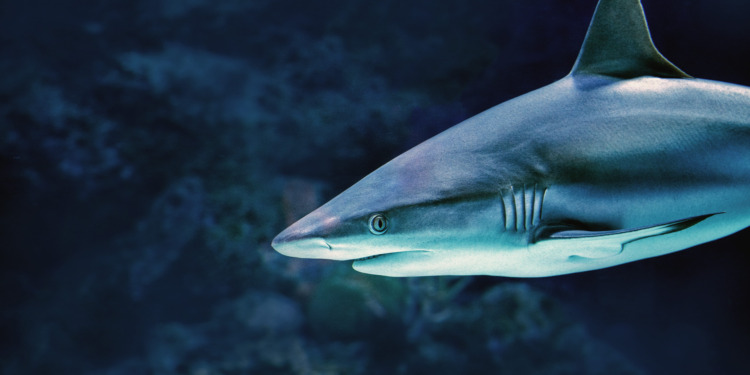New research published in Communications Biology analyses “humanity’s modern day predatory interactions with vertebrates” in order to better understand the “ecological consequences” of human behaviour.
The research found that, whilst humans have long been a part of Earth’s predatory landscape, “the rise of advanced hunting and fishing technology, global commercialization, trade, and more” is quickly changing the interactions between people and their prey.
By analysing “use and trade” data on 47,000 species from the International Union for Conservation of Nature’s (IUCN) Red List, the researchers found that mankind exploits up to 300 times more species than comparable predatory species like sharks or other mammalian predators.
Humanity’s exploitation of other vertebrates for pets, medicine and other uses, the scientists reveal, now affects almost as many species as the exploitation of vertebrates for food.
“Almost 40% of exploited species are threatened by human use,” according to this new research.
“Although humans have long been predators with enduring nutritive and cultural relationships with their prey,” reads the paper, “seldom have conservation ecologists considered the divergent predatory behaviour of contemporary, industrialized humans.”
Human activity is “profoundly” changing interactions between people and their prey – threatening prey species as well as exceeding other globally widespread predators. These changes in interactions, according to the research, could have vast and significant outcomes including extinction and threatening ecological diversity.
Threat to prey species
According to the report, humans exploit “roughly a third” of the six vertebrate classes the scientists examined. Of this, only 55% are used directly for food, the scientist found.
Humanity also has the most diversity when it comes to the species we prey on. As the paper states, “human prey diversity is highest across marine prey species,” with 43% of assessed marine species being exploited, or considered prey, to mankind. Freshwater vertebrates account for 35% and terrestrial vertebrates account for 26%.
Ray-finned fishes are a highly exploited vertebrate group with the research finding that humanity uses 42% of all species examined in the study. The human race also uses 46% of bird species, according to the study.

The study found that human use is a “considerable threat for 12% of all vertebrates and 39% of used vertebrates.” This quantifies the impact of human predation on species extinction and biodiversity.
Furthermore, the study found that 4% of all vertebrates and 13% of used vertebrates classified as facing extinction have human use listed as a threat. The extent to which humanity contributes to the risk of extinction was found in the report to range from 6% in exploited ray-finned fishes to 36% in exploited mammals.
The overlap between the prey of humans and the prey of other predators is also large, according to the paper. For example, humans share 30% of target prey species with bigeye tuna and 100% of prey with a jaguar. The study found the median overlap across all examined predators is 69%.
What functions do different vertebrae have for humans?
The IUCN data shows 18 different categories of human use when it comes to vertebrates, the report explains. The categories include for pets, food for humans, hunting/collection, clothes, medicine and animal feed, among other uses.
There are also multiple cases where an individual species has multiple uses; according to the report, this applies to 26% of vertebrate species.
The majority of exploitation from the marine and freshwater environments, 72% of species, is for human food purposes. The report goes on to explain that terrestrial vertebrates are more than twice as likely to be kept as a pet than they are to be used as food.

“Continued overexploitation will likely bear profound consequences for biodiversity and ecosystem function,” the researchers warn.
Speaking to the BBC, Dr Rob Cooke of the UK Centre for Ecology and Hydrology in Wallingford, Oxfordshire and one of the report’s authors, said: “The size and scale of what we found surprised us.”
“Humans have a breath-taking diversity of uses of animals but we need to move towards sustainable human-nature relationships across the globe,” said Cooke.
According to the report, “humanity now likely has a far broader predatory niche than at any time in history,” making us an incredibly significant factor in shaping the ecology and biodiversity on Earth.
In terms of confronting the threat humanity poses, the researchers state that it “requires an interdisciplinary and inclusive approach.” They believe that an approach “that recognizes historic and enduring interactions between Indigenous, place-based societies and prey with which they have maintained relationships over millennia” will be most appropriate.
Regardless of the approach, the researchers stress the need for society to “fully recognise” all the effects of “humanity’s outsized predatory niche,” concluding that exploitation rates must be constrained in order to safeguard over 45,000 species and the ecological processes they promote.
Editor’s Note: The opinions expressed here by the authors are their own, not those of Impakter.com — In the Featured Photo: Great White Shark under water. Featured Photo Credit: Wallpaper Flare.










